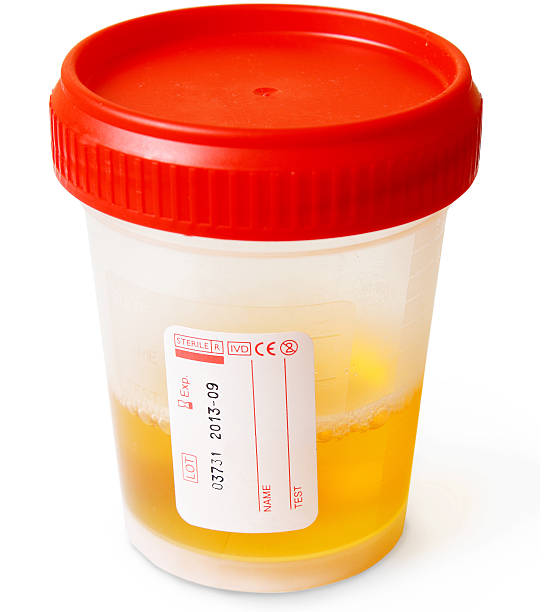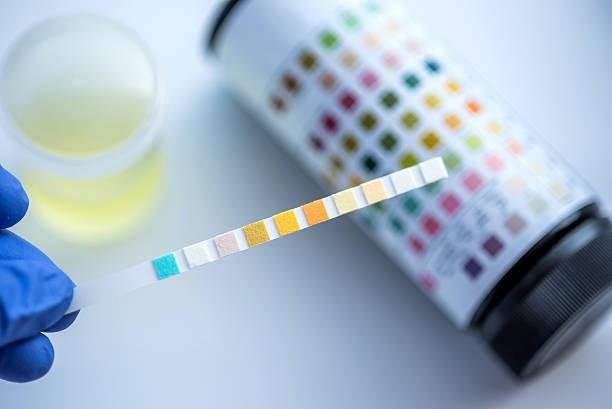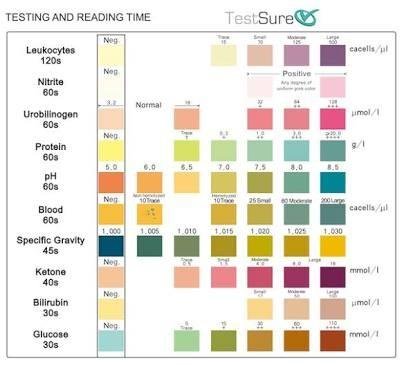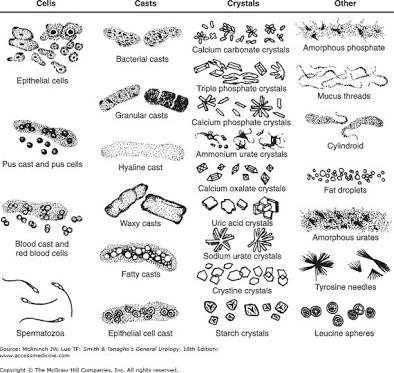DO I HAVE TO DO URINALYSIS TEST?
Yeah, in my last post, I wrote on URINALYSIS. You can check the link below to know more about URINALYSIS
https://steemit.com/science/@wisdoncouture/urinalysis
Symptoms that can prompt one to go for urinalysis are:
I. When there is an intensive change in urine color like orange, yellow, red e.t.c.
II. When one has back pain.
III. When you have pain when urinating.
IV. When you urinate too often.
V. When there is blood in the urine.
VI. Itching at the genital part.
VII. Abdominal pain.
In the process of Urinalysis, it involves physical examination, chemical component examination, and microscopic examination. Abnormality in any of the examination indicates one or two metabolic disorder or diseases.
Physical Examination: the normal color of urine is amber and it is clear. It has a slightly aromatic smell. The following are different physical observations one can have in urine and what they indicate.

Source @google
I. Yellow urine color: this can indicate the presence of bilirubin or urobilinogen in the urine and this indicates jaundice. This can also be due to intakes of some certain drugs like antimalarial drug or Vit. B-complex.
II. Smoky Red: this indicates the presence of blood in urine. This indicates Hemoglobinuria.
III. High color Concentrated: this occurs due to oxidation of urobilinogen to urobilin.
IV. Cloudiness: this is due to the presence of pus in the urine.
V. Orange: this indicates high levels of bilirubin or rifampicin
VI. Red: this indicates Porphyria or ingestion of red beet
VII. Milky: this can be Chyluria
VIII. Black urine: this indicate alkaptonuria or formic acid poisoning.
Chemical Component Test: the chemical component test for are Nitrogen, Bilirubin, Urobilinogen, Ascorbate, Ketone, Glucose, Protein, pH, Specific gravity, leukocyte, and blood. What they indicate when presence in urine is explained below. This is done using urine reagent test strip. Each color change in the urine indicates if the result is negative or positive.

I. Nitrogen: presence in urine indicate the presence of bacteria in the urine.
II. Bilirubin: this indicates hepatitis, obstructive jaundice.
III. Urobilinogen: this is due to concentrated urine, hepatitis, intravascular hemolysis, low in obstructive jaundice
IV. Ascorbate: Excessive intake of vitamin C.
V. Ketone: Diabetes mellitus bodies Starvation.
VI. Glucose: this shows Diabetes mellitus, Renal
glycosuria; Fanconi's syndrome.
VII. Protein: this indicate fever, exercise, orthostatic, proteinuria, glomerular -
nephritis, urinary tract infection, tubular diseases.
VIII. pH: there will be low pH in high protein diet and acidosis. Recent meal-alkaline tide and also high pH in low protein diet
IX. Specific Gravity: there will be low specific gravity in renal tubular dysfunction, diabetes insipidus, polydipsia. One can have high specific gravity in inadequate water intake, volume depletion.
X.** Leukocyte:** this indicates urinary tract infection or fever.
XI. Blood: menstruation, traumatic catheterization, glomerulonephritis, stones glomeruli trauma of urinary tract, hemoglobinuria-hemolysis.
If there is a trace of any of all this chemical component in the urine, it can be count as insignificance because some may be due to a drug that the person is using, dietary intake, exercise, water intake, if the person is menstruating or about to finish her menstruation or just done with her menstruation.
If the result indicates +, ++ or +++, the person will have to go for further medical diagnosis.
The table below shows the interpretation of the chemical component of urine.

Source @google
Microscopic Examination: this is used to check for red blood cells, white blood cells, epithelial cells, yeast, cast, and crystals. There should be done of this in urine but when they are in excess it indicates some diseases. A lot of crystal and cast are found in urine which is very significant.
I. Red blood cells: this indicates inflammation, disease/infection of the urinary tract (e.g. bladder/kidneys/urethra).
II. White blood cells: this can indicate infection or inflammation of the urinary tract.
III. Epithelial Cell: this indicates infections, malignancies, and inflammation of the urinary tract. This can help to identify the area of the urinary tract where there is a problem.
IV. Yeast: this indicates a vaginal yeast infection and requires a follow-up test on vaginal secretions (swab).
V. Casts: these are hot dog-shaped particles produced when the kidney cells secrete protein. Usually, these are visibly clear (hyaline), but various kidney diseases alter their appearance, giving an indicator of which disorder is present. For example, where red or white blood cell casts are found in the microscopic examination, a kidney disorder is indicated.
VI. Crystals: normal urine contains a range of different crystals such as calcium oxalates, calcium carbonate, crystalline uric acid, amorphous urate which are formed when waste chemicals bind together. Crystals come in all kinds of shapes, colors, and sizes. Whether a crystal form is dependent on how acidic/alkaline your urine is (which can be affected by your diet), urine temperature and how much of a particular substance is in your urine (since it is more likely to bind together). These ordinary crystals cause no problem, but abnormal crystals in the urine can cause pain and damage to the urinary tract such as cysteine, tyrosine, and leucine. Kidney stones (calculi) form in the kidney and can become lodged in either the kidney or ureters.
The table below shows the structures of some microscopic structures found in urine.

Source @google.
Contributions are highly welcome.
Thanks for reading.
Am An Happy Biochemist.
interesting post. what made u decide to write about this? I drink a fair amount of water and think going potty every 1-2 hours is a good rate for me.. i can just make it through most movies.. not the long one like Lord of the Rings, etc. :P
I decide to write about this test because it is so affordable compared to any other test. It can be used to detect hyperglycemia, diabetes, kidney diseases, liver diseases, polyuria, urinary tract infection and lots of other diseases.
To the question in your title, my Magic 8-Ball says:
Hi! I'm a bot, and this answer was posted automatically. Check this post out for more information.